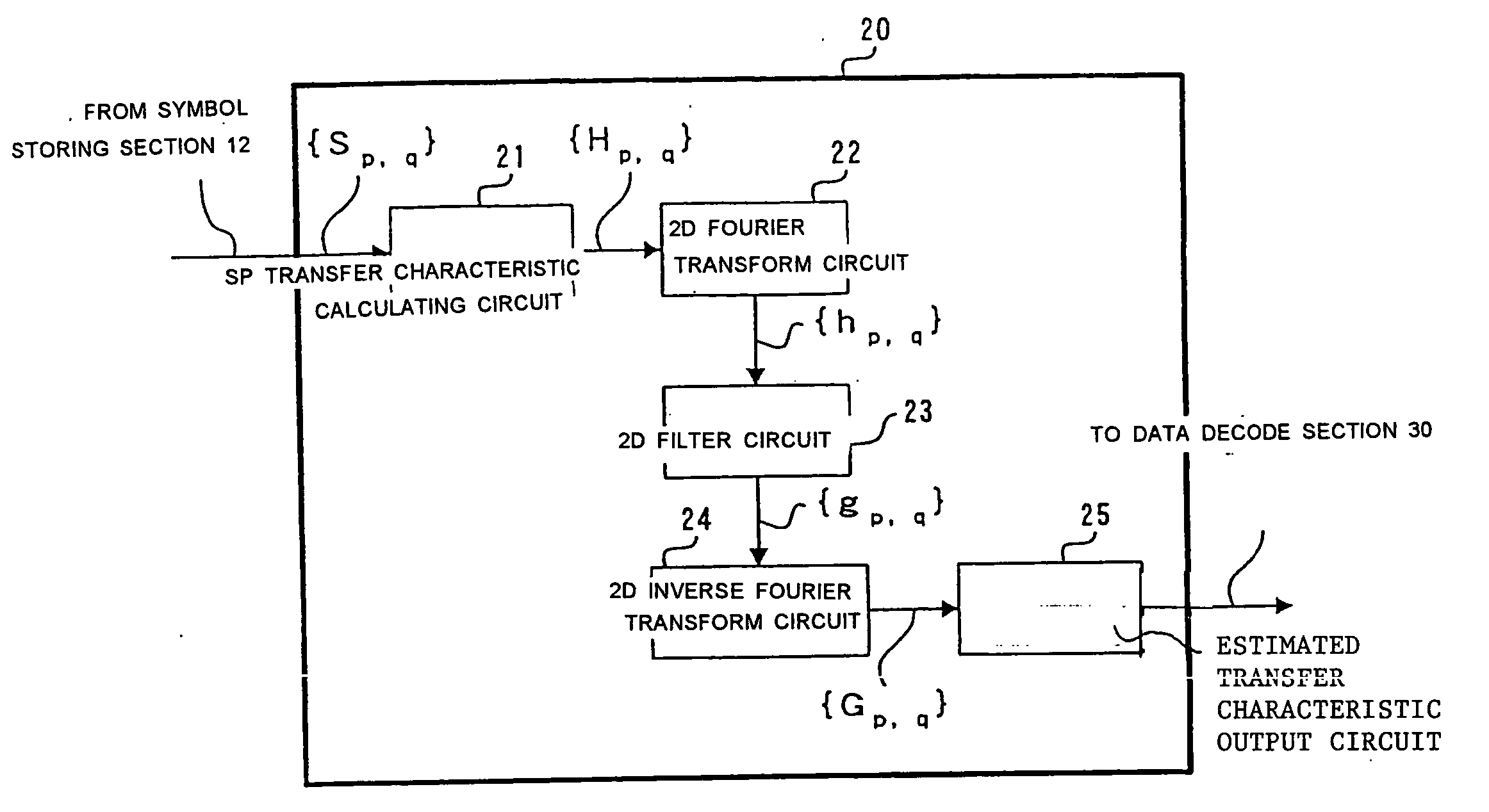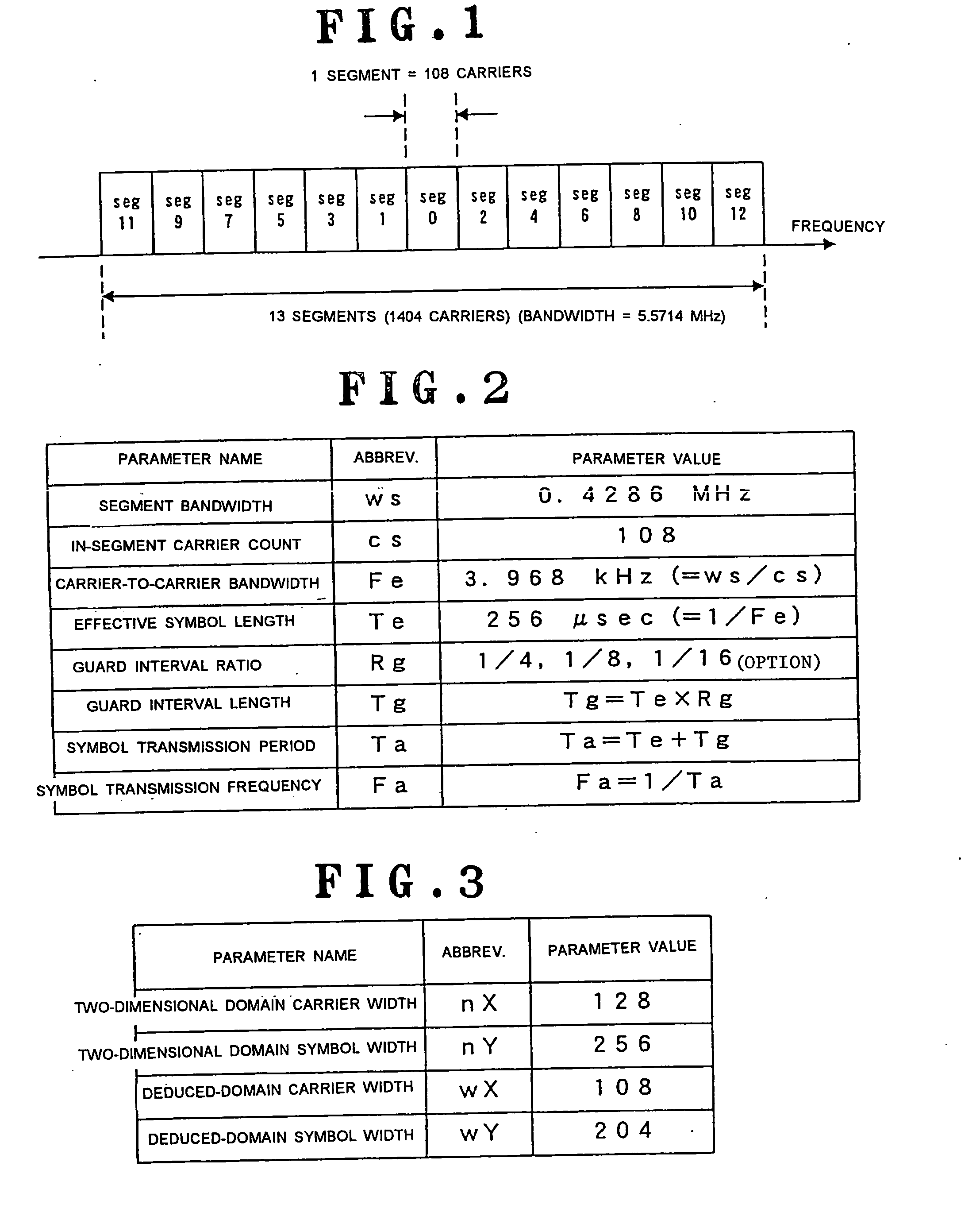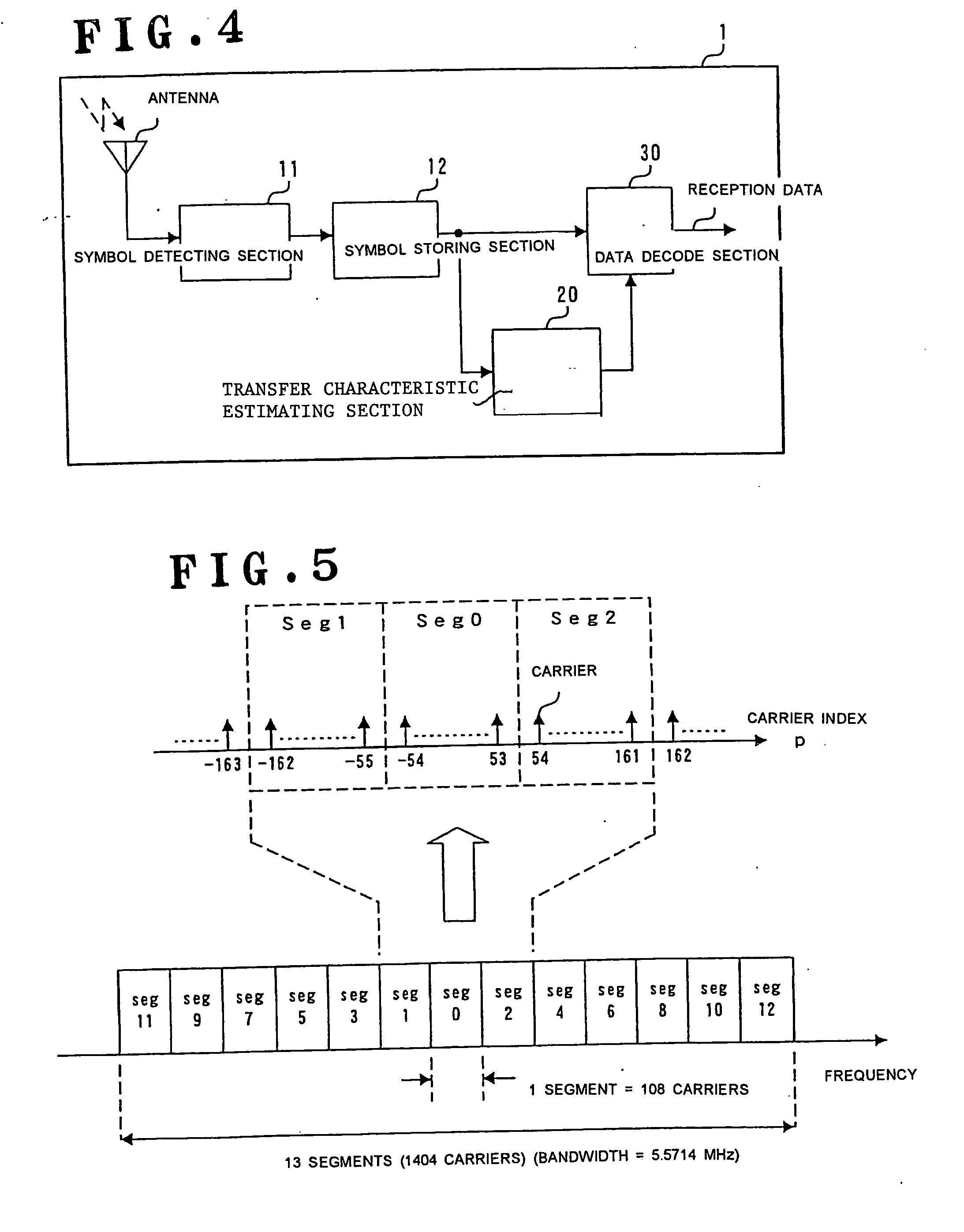Digital broadcast signal receiving apparatus and method
a digital broadcast signal and apparatus technology, applied in the field of digital broadcast signal receiving apparatus and method, can solve the problems of low estimation accuracy of signal transfer characteristic, increased error in estimating signal transfer characteristic on ofdm symbol, and inability to determine the absolute delay amount unambiguously
- Summary
- Abstract
- Description
- Claims
- Application Information
AI Technical Summary
Problems solved by technology
Method used
Image
Examples
first embodiment
[0036] Explanation will be made below on a receiver in a first embodiment based on the present invention.
[0037] Incidentally, in each of the ensuing embodiments, explanations will be by exemplifying a partial receiver for a terrestrial digital broadcast based on ISDB-T. In the case of the ISDB-T standard, the OFDM symbol is constituted with 13 segments, as shown in FIG. 1. Each segment, in transmission mode 1, contains 108 waves of carriers, for example. The partial receiver refers to a receiver for demodulating only the carriers included in segment 0 positioned centrally of the 13 segments.
[0038] In the below cases, explanations will be by exemplifying the case in transmission mode 1 of a plurality of transmission modes as defined under the ISDB-T standard. Incidentally, FIG. 2 is shown the values of modulation parameters in transmission mode 1 while in FIG. 3 is shown the values of constant parameters to be used in the explanations.
[0039] First of all, there is shown in FIG. 4 a...
second embodiment
[0061] Now explanation is made on a second embodiment based on the invention.
[0062] In the meanwhile, on the space (m, n) that a space (p, q) has been two-dimensional-Fourier-transformed, the m-axis corresponds to time and the n-axis to frequency respectively, as mentioned before. If expressing it more correctly, the m-axis corresponds to a delay time of impulse response over the transmission line while the n-axis corresponds to a variation frequency (Doppler frequency) over the transmission line. Therefore, the power spectrum of on-transmission-line transfer characteristic appearing on the space (m, n) exhibits a tendency to concentrate to a particular domain on the space (m, n) in accordance with a reception environment, as mentioned before.
[0063] For example, in the case of stationary reception in an suburban area where no edifices such as high-rise buildings and the like exist around the receiver (reception environment 1), there is less delay spread in a reception radio wave du...
third embodiment
[0081] Now explanation is made on a third embodiment based on the invention.
[0082] This embodiment is configured to make a predetermined selection process on a data group existing within a pass band of two-dimensional filter window thereby further narrowing the data-capturing pass band. Incidentally, the receiver of this embodiment is similar in configuration to that of the first embodiment. The difference lies only in that the following processing is added upon the filtering process in the filter circuit 23. Furthermore, this embodiment may be used together in the second embodiment.
[0083] The two-dimensional filter circuit 23 of this embodiment is assumably set with a pass band A in the two-dimensional filter window, as shown in the foregoing FIG. 9 for example.
[0084] Accordingly, at the outside of the pass band of the two-dimensional filter window, the deduced transfer characteristic {gm,n} on the space (m, n) is defined as
gm,n=0
in order to remove aliasing components similarly ...
PUM
 Login to View More
Login to View More Abstract
Description
Claims
Application Information
 Login to View More
Login to View More - R&D
- Intellectual Property
- Life Sciences
- Materials
- Tech Scout
- Unparalleled Data Quality
- Higher Quality Content
- 60% Fewer Hallucinations
Browse by: Latest US Patents, China's latest patents, Technical Efficacy Thesaurus, Application Domain, Technology Topic, Popular Technical Reports.
© 2025 PatSnap. All rights reserved.Legal|Privacy policy|Modern Slavery Act Transparency Statement|Sitemap|About US| Contact US: help@patsnap.com



